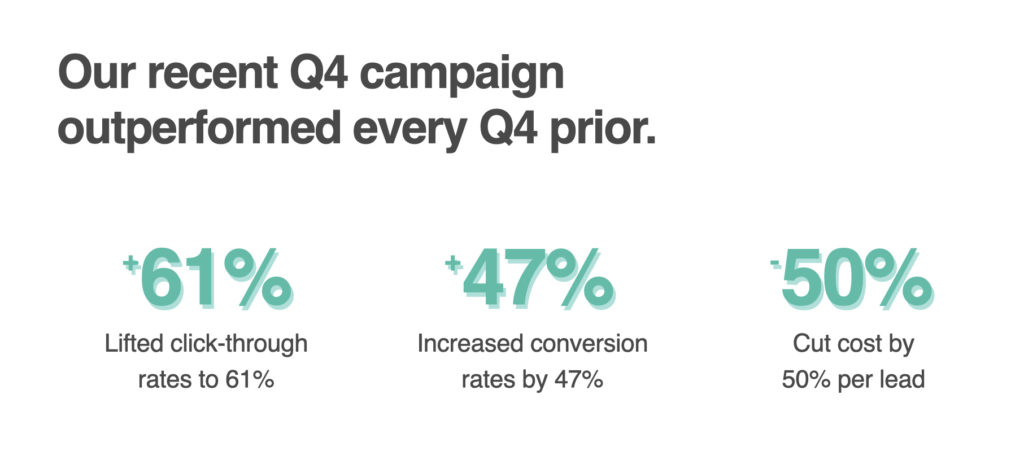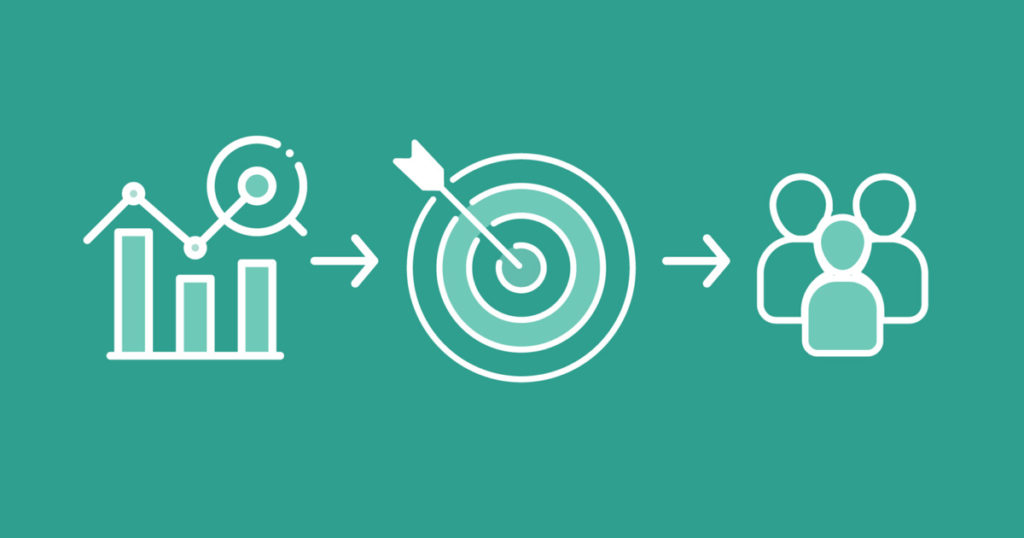Digital media is one of the fastest and most cost-effective ways to reach customers, grow awareness and generate leads. That is, if you know how to find your audience online and target them effectively. Our approach prioritizes the audience as the most influential piece of every digital media plan.
Case in point: identifying the right people (in the right places) is how we were able to generate 250 new leads for THREE, an online small business insurance provider.

These results aren’t some kind of algorithmic accident. We achieve consistently high engagement because we have audience maximization down to a science that’s based on three kinds of data: first-party, third-party and campaign.
“It all starts with the audience. Who are they? Where are they currently looking for this product/service? And why would they be looking for it? These kinds of questions are crucial to our strategies.”
– Kelly Heavican, Media Lead at E&S
How to find your audience niche.
1. Start with what you know.
Unless you’re completely new to the market, you probably own some kind of existing data about your unique customers. This is called first-party data because it’s information that’s captured through your direct customer relationships, and it can come in many forms.
Examples of first-party data include:
- Email addresses
- Site activity
- Purchase history
- Reviews
- Sales interactions
- Demographics
- Interests
- Job titles and identities
Analyzing the data from these sources can tell you who your best customers are today and what makes them best for your business. Are they starting with a certain product and coming back for more? Is there a time of the day, week, or year when they are more likely to engage with your site? You’re looking to identify and understand trends about their browsing and buying behavior.
For THREE, we had strong first-party data around the businesses that had purchased policies and which niche industries they belong to. That information inspired our segmented campaign approach with a variety of messages and images related to each industry niche. Our ads felt more personal than a general campaign to any business owner.
“First-party data is where every company should be investing. As we learned at Google Live, third-party cookies are phasing out. So, first-party data will become even more important for identifying customers online.”
– Kelly Heavican
2. Use other data sources to augment your findings.
Once you’ve analyzed your first-party data, you can layer on insights pulled from third-party data sources that don’t have direct relationships with your customers.
Examples of third-party data include:
- Purchased email lists
- Third-party cookies
- Market research
- Statistics on cultural trends
- User data from ad platforms
Third-party data can be used to validate or challenge your first-party insights, but it’s also helpful for rounding out the picture of your ideal customers for each campaign. This can be especially useful when you’re trying to identify a new audience segment or reach a prospective customer whose first-party data you’ve yet to collect.
For our THREE campaigns, we worked closely with our ad partners at Bing, Google and Meta to understand exactly how each of our audience niches were using their platforms, and therefore, which ad types would be most relevant to them. The collaborative relationships we have with our media partners are invaluable; we bring the first-party client knowledge, and they provide proprietary third-party information we can use to match the right person with the right message at the right time.
3. Keep learning about your audience as you go.
The final piece of the media-maximizing equation is live campaign data. While steps one and two of this process help shape a deeply informed hypothesis about who your audience is and how to reach them, step three is all about proving that hypothesis true.
“My favorite part about media buying is the storytelling. As the campaign plays out, we’re constantly evaluating the performance analytics to learn what’s working and why. The data tells the story.”
– Kelly Heavican
A successful media plan is not a set-it-and-forget-it endeavor. Hopefully, you’ve used your first and third-party data wisely. But it’s normal (and probably advantageous) to tweak your placements, bids and/or creative throughout the campaign’s duration based on performance.
For example: if there’s a high volume of traffic for a particular ad, yet no conversions, there’s probably a reason. Maybe the message is wrong. Could you promote signing up for a demo or trial first instead of asking them to buy? Or maybe it’s something with the design and visuals of your ad. Does your product look better when you can see it in use versus in a lifestyle photo? There are countless ways campaigns can play out based on how they’re set up, what’s going on in the lives of your customers and even what’s happening in society at large so it’s important to stay flexible and agile with your campaign creative.
It’s also important to remember that your media channels should not be evaluated individually. Every part of your media mix works together to shift perceptions or persuade a purchase. An awareness ad at the top of your sales funnel will ultimately impact how someone interacts with a lower funnel ad designed to convert. Even the technology is connected — exposure to an ad on Facebook will impact a customer’s results if they search that product on Google.
Media is a fascinating and complex discipline, which is why an expert agency partner can be so beneficial. We were involved at every step of the process for the THREE campaign, from pinpointing the desired customers to developing creative that would resonate to monitoring campaign data that informed key adjustments.
The bottom line.
The digital media landscape is highly individualized and constantly evolving, so there’s never a one-size-fits all solution. Our media team’s ability to impact THREE’s business came from the wealth of knowledge from previous campaigns they’d run for dozens of other clients and product types. They knew what to look for, and they know where platforms are headed next. Finding your audience niche and maximizing its potential requires dedicated attention, patience and a willingness to explore the possibilities. Let us know if we can help you navigate.
